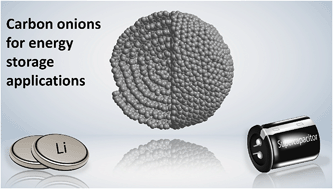Review: carbon onions for electrochemical energy storage
Abstract
Carbon onions are a relatively new member of the carbon nanomaterials family. They consist of multiple concentric fullerene-like carbon shells which are highly defective and disordered. Due to their small size of typically below 10 nm, the large external surface area, and high conductivity they are used for supercapacitor applications. As electrode materials, carbon onions provide fast charge/discharge rates resulting in high specific power but present comparatively low specific energy. They improve the performance of activated carbon electrodes as conductive additives and show suitable properties as substrates for redox-active materials. This review provides a critical discussion of the electrochemical properties of different types of carbon onions as electrode materials. It also compares the general advantages and disadvantages of different carbon onion synthesis methods. The physical and chemical properties of carbon onions, in particular nanodiamond-derived carbon onions, are described with emphasis on those parameters especially important for electrochemical energy storage systems, including the structure, conductivity, and porosity. Although the primary focus of current research is on electrode materials for supercapacitors, the use of carbon onions as conductive additives and for redox-active species is also discussed.

- This article is part of the themed collection: 2016 Journal of Materials Chemistry A Most Accessed Manuscripts

 Please wait while we load your content...
Please wait while we load your content...